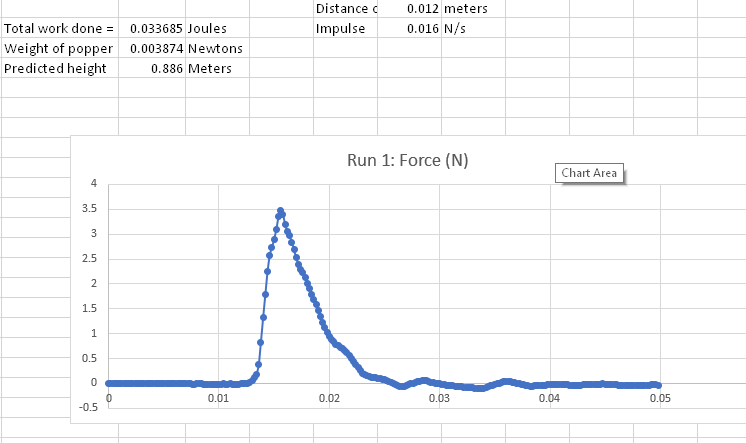

There are many jumping or springing toys that can really enliven a physics lesson – they can make some investigations much easier to manage and can illuminate the physics of energy stores.
The toy itself consists of a curved rubber disc that you invert. After a short time the toy pops and springs into the air. Other examples using base, a spring, a suction cup and a head are available and you could even use a ballpoint pen.
Two from my collection:

If students have access to a few of these toys and the time to play, a lot of questions arise:
You can lead them further with a few well placed questions:
Once you have the general q’s solved it’s time to get more precise and to start to investigate with data. The first simple experiment is to measure the jumping height and calculate
the energy that must have been stored elastically.
The energy stored gravitationally is the mass of the popper multiplied by the acceleration due to gravity (9.81 m/s^2) multiplied by the height (in m) to which it reaches.
Different surfaces that the toy launches from will affect this differently – the highest jumps will be from balanced on the top of a pen or finger – as this way the popper is able to exert the jumping force over a longer distance. Another simple experiment is to compress the toy on to a – kitchen – scale and to measure the weight and the compression distance, from this you can calculate the spring stiffness and the energy stored in the spring. Comparing the two would allow you an efficiency.
In the case of this particular toy, the popper jumped to approx 0.9m, giving a work done of around 0.03 J (mass is only 0.03kg)
As with most things you can use a variety of approaches to solve problems or to look at the system from a number of perspectives. A slow motion video would allow you to calculate the impulse (the change in momentum) or the acceleration of the toy – from this you could calculate predicted heights using velocity and the equations of uniformly accelerated motion (suvat);
You could set the popper up on a force meter and measure the force exerted over time and use this to calculate the work done. In this shot I am processing the data in excel (spreadsheet available on request):

My particular favourite however is to use an old mobile phone and the tools provided by the fantastic Phyphox app.
From measuring the acceleration experienced by the phone we can calculate the force that the popper exerts on the phone:
In this case the acceleration was 8ms^-2. This, combined with Newton’s second law gives us a force of 14N. By looking at the graph of acceleration over time we can approximate the time for which it has been exerted and therefore work out the velocity of the toy, the height to which it should rise, or any other connected piece of info.
